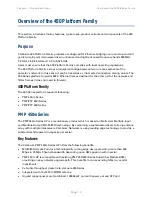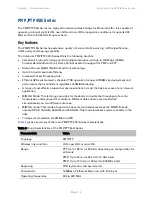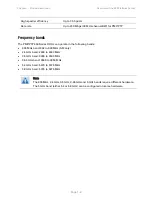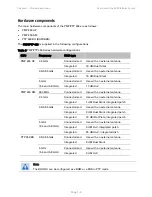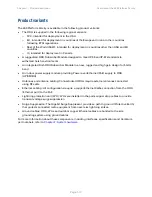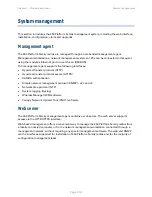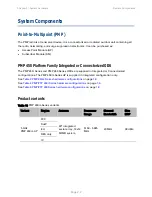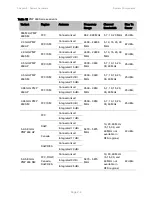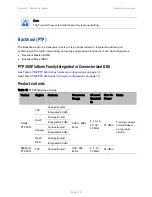
Chapter 1: Product description
Wireless operation
Page 1-14
Wireless operation
This section describes how the 450 Platform Family wireless link is operated, including modulation
modes, power control and security.
Time division duplexing
The system uses Time Division Duplexing (TDD) – one channel alternately transmits and receives
rather than using one channel for transmitting and a second channel for receiving. To accomplish
TDD, the AP/BHM must provide sync to its SM/BHS. Furthermore, collocated APs/BHMs must be
synced together – an unsynchronized AP/BHM that transmits during the receive cycle of a
collocated AP/BHM can prevent a second AP/BHM from being able to decode the signals from its
APs/BHSs. In addition, across a geographical area, APs/BHMs that can “hear” each other benefit
from using a common sync to further reduce self-interference within the network.
Modules use TDD on a common frequency to divide frames for uplink (orange) and downlink
(green) usage, as shown in the figure below.
For more information on synchronization configuration options, see
GPS synchronization
on page
2-38
.
Figure 2 TDD frame division
Time
Summary of Contents for PMP 450 Series
Page 125: ...Chapter 3 System planning Typical deployment Page 3 3 Figure 37 Wall installation...
Page 126: ...Chapter 3 System planning Typical deployment Page 3 4 Figure 38 Roof installation...
Page 127: ...Chapter 3 System planning Typical deployment Page 3 5 Figure 39 GPS receiver wall installation...



